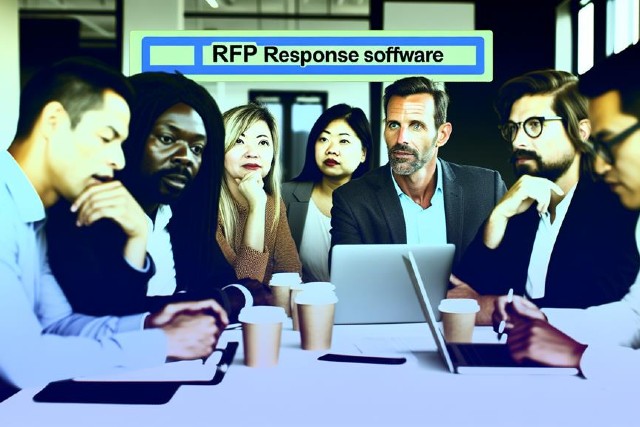Did you know that businesses spend an average of 20-30 hours on each Request for Proposal (RFP) response? That’s a significant amount of time and resources dedicated to crafting a compelling and comprehensive proposal.
But what if there was a way to streamline this process and significantly reduce the time spent? Enter RFP response software – a game-changer for organizations looking to improve their efficiency and effectiveness in responding to RFPs.
In this discussion, we will explore the benefits of using RFP response software, key features to look for, and real-life success stories that highlight its potential.
So, how can this software be your gateway to swift and effective responses? Let’s find out.
Benefits of RFP Response Software
By using RFP response software, you can streamline the entire process, saving time and ensuring a more efficient and effective response to requests for proposals. The benefits of implementing such software are numerous and can greatly contribute to increased productivity and streamlined processes.
Firstly, RFP response software automates many manual tasks that are typically time-consuming. With just a few clicks, you can generate professional-looking proposals, eliminating the need for manual formatting and editing. This not only saves time but also reduces the risk of errors or inconsistencies in your responses.
Furthermore, RFP response software allows for easy collaboration among team members. Instead of passing documents back and forth via email, you can work on the same document simultaneously, making real-time updates and ensuring everyone is on the same page. This seamless collaboration leads to faster response times and a more cohesive proposal.
Additionally, RFP response software often comes equipped with a centralized knowledge base. This means that all relevant information, such as past proposals, templates, and company data, can be stored in one place. This centralized knowledge base not only promotes consistency in your responses but also allows for quick access to information, saving you valuable time when crafting your proposals.
Key Features to Look for in RFP Response Software
Now that we’ve explored the benefits of RFP response software, let’s dive into the key features you should look for when selecting the right software for your needs.
Customization options and collaboration tools are two crucial features to consider.
When it comes to customization options, it’s important to find a software solution that allows you to tailor your responses to each specific RFP. Look for features that allow you to easily create and manage templates, customize branding and formatting, and incorporate your unique value proposition. The ability to personalize your responses not only saves time but also helps you stand out from the competition.
In addition to customization, collaboration tools are essential for streamlining the RFP response process. Look for software that enables seamless collaboration among team members, allowing them to work together in real-time. Features like document sharing, commenting, and task assignment can greatly enhance team productivity and efficiency.
How RFP Response Software Improves Efficiency
RFP response software significantly enhances efficiency by streamlining the entire process, enabling seamless collaboration, and automating repetitive tasks. With the increasing number of requests for proposals (RFPs) that organizations receive, it’s crucial to find ways to improve productivity and streamline processes. This is where RFP response software comes in.
By using RFP response software, you can eliminate the need for manual data entry and formatting. Instead of spending hours copying and pasting information, the software automatically populates your responses into the appropriate sections of the RFP. This not only saves time but also reduces the risk of errors.
Furthermore, RFP response software allows for seamless collaboration among team members. With the ability to work on the same document simultaneously, you can avoid version control issues and ensure that everyone is on the same page. This streamlines the review and approval process, making it faster and more efficient.
In addition, the software automates repetitive tasks such as generating cover letters, creating tables of contents, and tracking changes. This frees up valuable time that can be spent on more important tasks, ultimately improving productivity.
Best Practices for Using RFP Response Software
To maximize the benefits of RFP response software, follow these best practices for optimal efficiency and effectiveness.
Implementing RFP response software can be a game-changer for your business, streamlining the entire process and saving you valuable time and resources. But like any new technology, it’s important to approach it with a well-thought-out strategy.
First, establish clear implementation strategies for RFP response software. Start by identifying key stakeholders who’ll be involved in the process, such as sales, marketing, and subject matter experts. Ensure that everyone understands the goals and objectives of using the software and provide adequate training to ensure a smooth transition.
One common challenge faced when using RFP response software is the overwhelming amount of information to manage. To overcome this, organize your content library effectively by categorizing and tagging your responses. This will make it easier to search for and retrieve relevant information quickly.
Another challenge is maintaining consistency and accuracy in your responses. To address this, create standardized templates and guidelines for your team to follow. This will ensure that your responses are consistent in tone, style, and messaging.
Case Studies: Success Stories With RFP Response Software
Companies across various industries have experienced remarkable success stories with the implementation of RFP response software. These case studies highlight the significant benefits of using this software and demonstrate its effectiveness in streamlining the proposal process.
One common implementation challenge that companies face is the integration of RFP response software with their existing systems. However, these case studies show that with proper planning and support from the software provider, this challenge can be overcome. For example, a manufacturing company seamlessly integrated the software with its CRM system, enabling them to access relevant customer data and respond to RFPs more efficiently.
Another implementation challenge is training employees on how to use the software effectively. However, these case studies reveal that the software’s user-friendly interface and comprehensive training materials make the onboarding process smooth and hassle-free. Companies have reported significant time savings and increased productivity once their employees become proficient in using the software.
Frequently Asked Questions
Is RFP Response Software Suitable for All Types of Businesses and Industries?
RFP response software is suitable for all types of businesses and industries. It offers scalability and cost effectiveness, helping you streamline your responses and maximize efficiency. Say goodbye to manual processes and embrace a more effective solution.
Can RFP Response Software Integrate With Other Business Software Systems?
Looking to streamline your business software systems? RFP response software has integration capabilities that will blow your mind. Say goodbye to manual data entry and hello to efficiency. Experience the benefits now!
How Secure Is the Data Stored in RFP Response Software?
Your data is safe and secure with our RFP response software. We use advanced data encryption and strict access control measures to ensure that only authorized personnel can access and protect your valuable information.
What Kind of Support and Training Options Are Available for Users of RFP Response Software?
With user training and technical support, you’ll have the confidence to navigate the RFP response software. From interactive tutorials to 24/7 helpdesk assistance, we’ve got you covered every step of the way.
Is It Possible to Customize and Tailor the RFP Response Software to Meet Specific Business Needs and Requirements?
Yes, you can customize and tailor the RFP response software to meet your specific business needs and requirements. This offers numerous benefits, but there may be some limitations and implementation challenges to consider.


